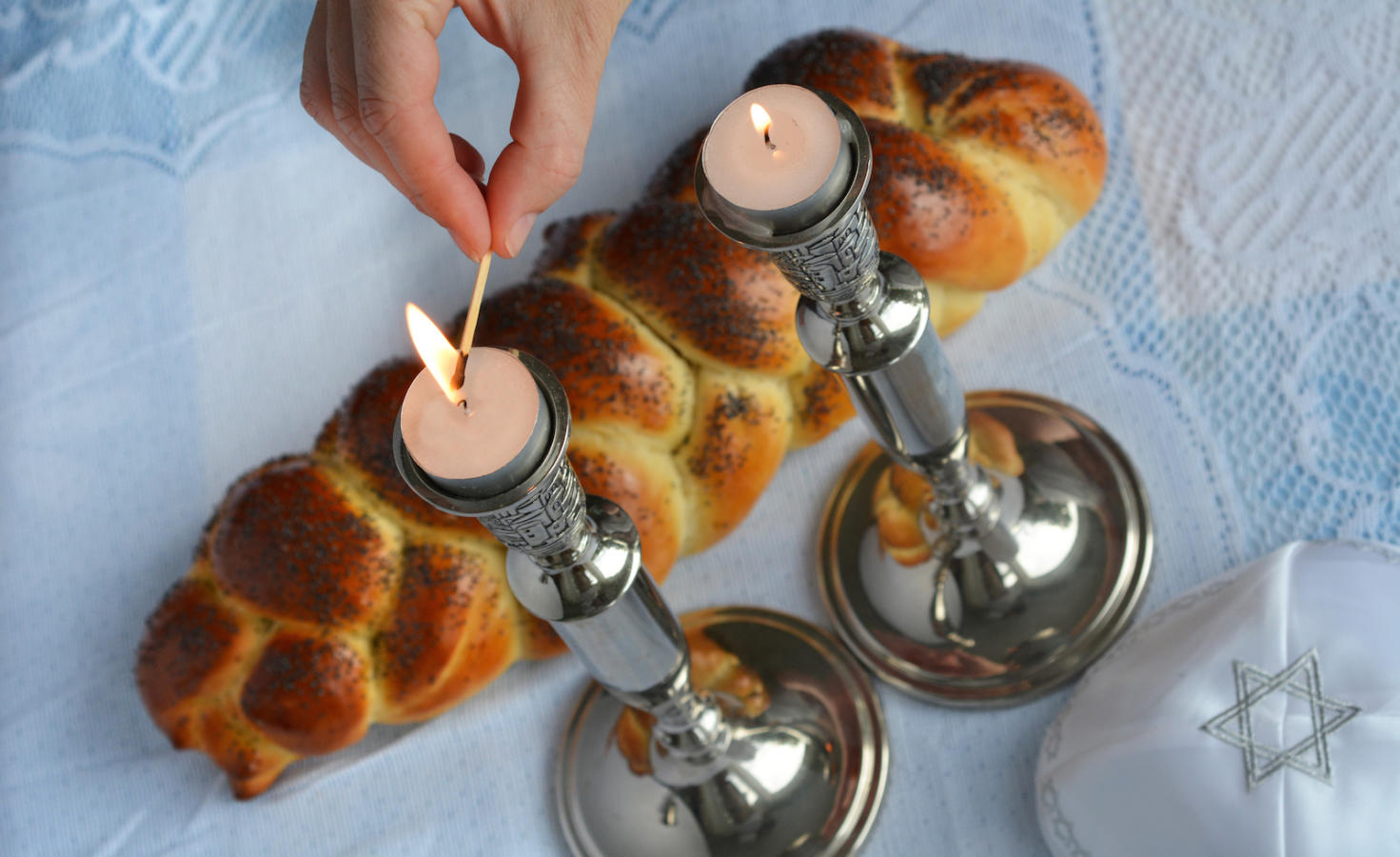You have to love that our most ancient ritual, Shabbat, starts with a most contemporary aesthetic: dining by candlelight. In Jewish tradition, lighting candles at sunset on Friday is the last act of the workweek, the literal spark that carries us into Shabbat.
For children, this moment can feel magical, especially with a little added drama. In the house Aliza grew up in, she and her siblings would race to stand by the dining room light switch, at the ready. The goal was to switch off the overhead light at the exact moment that a parent struck the match to light the Shabbat candles. So literal; so gratifying. Then the youngest, who was likely shoved on the way to the light switch, got to blow out the match, thereby taking another essential role in “turning on” Shabbat and extinguishing the week that was.
Yet nowhere in the Torah does God command us to light two candles at dusk. Rather, over the centuries, the sages linked the practice to shamor and zachor, the commandments to keep and remember Shabbat.
Ritual doesn’t exist for the sake of itself; it is an ancient technology designed to accomplish something. The rabbis of generations past reimagined the light of the Shabbat candles as a way for us to accomplish these mitzvot, these commandments. Through ritual, we transform a warm centerpiece for our home into a symbolic reminder to keep and remember Shabbat. Added to that, many find in the candles a physical reminder to slow down, to see each other differently, with candlelight reflecting in our eyes.

Help us keep Jewish knowledge accessible to millions of people around the world.
Your donation to My Jewish Learning fuels endless journeys of Jewish discovery. With your help, My Jewish Learning can continue to provide nonstop opportunities for learning, connection and growth.
Perhaps even more remarkable is the recognition that candle lighting was, for our ancestors, a ritual as practical as it is spiritual. Before there was electricity, candle lighting ensured that Shabbat wouldn’t be celebrated in the dark. In fact, our legal sources clearly state that if you can only afford to buy one thing to ready your home for Shabbat, it should be candles. Why? If you can’t see your table, your wine, your food, your guests, it’s impossible to achieve the ultimate goal: oneg Shabbat, the sheer enjoyment of Shabbat.
From birthday cakes to campfires, we know from our daily lives that gathering around firelight can be magical. With Shabbat candle lighting, we are invited to close our eyes and, with a little light and a little magic, welcome the weekend.
Aliza Kline is the founding executive director of OneTable, which empowers young Jews to develop a Shabbat dinner practice. Rabbi Jessica Minnen is OneTable’s director of programs.
Sign up for My Jewish Learning’s RECHARGE, a weekly email with a collection of Shabbat readings and more to enhance your day of rest experience.



